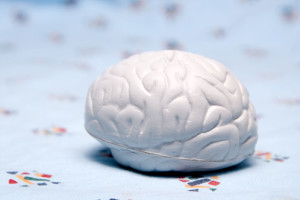Disrupted transport routes in nerve cells are a cause of Parkinson’s
Traffic jams in the brain
‘Traffic jams’ can also occur in the brain and they can be damaging. Researchers at the Division of Stem Cell Biology have been able to confirm that this is the case. They have been able to prove that disrupted transportation routes in nerve cells are a significant cause of Parkinson’s disease. Their findings have recently been published in the leading journal PNAS.
Nerve fibers give nerve cells their characteristic long shape. Measuring up to one meter in length, they form the contact points to other nerve cells. In order to carry out the important task of communicating with other nerve cells, the fine branches of these nerve fibers and their ends, called synapses, must be regularly supplied with energy from the cell body. If this energy supply is interrupted, the synapses are destroyed. Connections between nerve cells are then disrupted, which can lead to the cells dying off. This process is typical for the development of brain disorders such as Parkinson’s disease.
It is unclear which mechanisms are responsible for the loss of nerve cells in Parkinson’s. Researchers at the Division of Stem Cell Biology, led by Dr. Iryna Prots and Prof. Dr. Beate Winner, in conjunction with researchers from the Divsion of Molecular Neurology (Janina Grosch) have now succeeded in demonstrating that a type of ‘traffic jam’ in the nerve cells could be the cause.
The researchers discovered that the traffic jam is triggered by a protein called alpha-synuclein, which is also found in healthy nerve cells. In abnormal nerve cells, the protein forms deposits, or even lumps, leading to a delay, disrupting the energy supply of the nerve fibers and, ultimately, damaging the synapses.
The researchers were also able to demonstrate this mechanism in cell cultures taken from patients with Parkinson’s. A small skin sample was taken from affected patients. These skin cells were then converted into stem cells, which can be developed into any type of cell, and in this case, into nerve cells.
In initial trials, the researchers succeeded in suppressing the formation of lumps of alpha-synuclein, thus improving the transportation of information in the nerve fibers. However, the substance they used has not yet passed clinical trials. Nevertheless, the lead author of the study, Dr. Prots, says ‘Our findings mean we can improve our understanding of the mechanisms that cause Parkinson’s and push forward new strategies for treatment during the progression of the disease.’
Further information
Dr. Iryna Prots
Phone +49 9131 8539303
Prof. Dr. Beate Winner
Phone +49 9131 8539301
